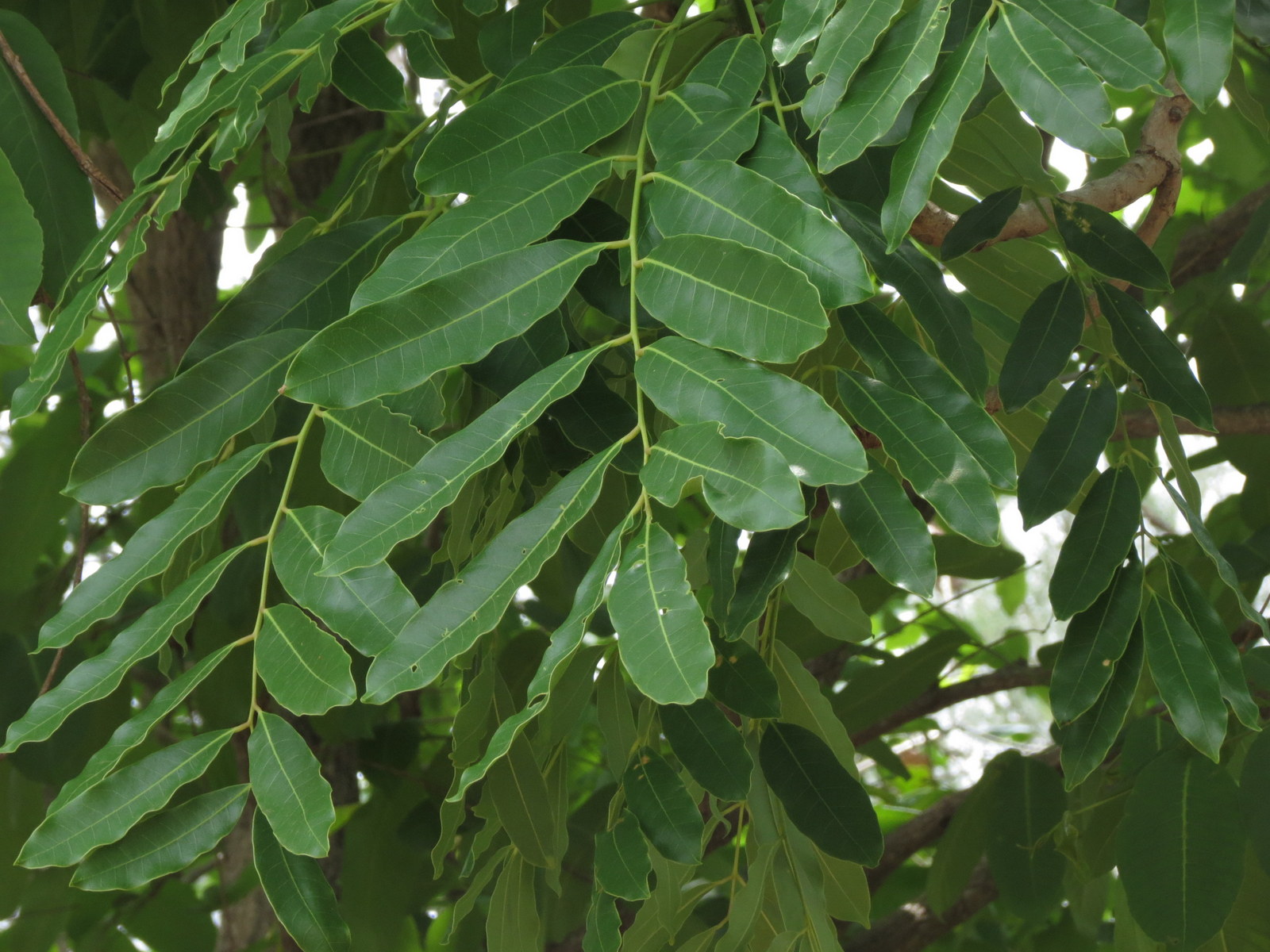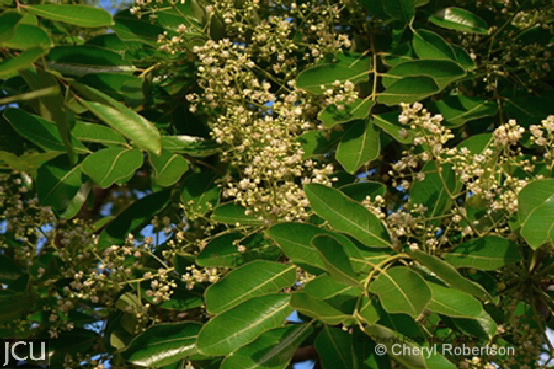Khaya senegalensis (Desv.) A. Juss.
| Botanical Name | Khaya senegalensis (Desv.) A. Juss. |
| Order: | Sapindales |
| Family: | Meliaceae |
| Genus: | Khaya |
| Species: | K. senegalensis |
| Common Names: | Dry zone mahogamy |
Plant Synonyms
Plant Local Names
Hausa Name: Madaachi
Yoruba Name: Oganwo
Igbo Name: Ono, Ehaamufu
Plant Habitat
The plant habitat is savannah wood land of the Guinea zone including transition types on the borders of the forest zone.
Plant Material of Interest
Bark, flowers
Plant Description
Tree up to 30.48 high and 274cm girth with dense crown and short bole covered with dark grey scaly bark. Slash dark pink, bark bitter yielding gum when wounded. Leaves with 3 pairs of leaflets, 5- 11cm long by 3- 5 inches broad more or less elliptic round, obtuse or very shortly acuminate at apex. Flowers with pale green sepals, cream petals and staminal tube and bright red disc beneath the ovary. Fruit opening by 4 valves each about 6.35cm long and 0.254cm thick. (Ogbochukwu, 2005)
Plant Used Parts
Plant Uses
i. The bark is sometimes used for tanning and is very bitter which has a considerable reputation among the people as a fever remedy taken as a decoction.
ii. Bark decoction used as stomachic and bitter tonic, considered also as vermifuge and taeniacide.
iii. Also used for syphilis and as a purgative.
iv. The flowers sometimes used medicinally for stomach troubles and as an ingredient in anti sypillitic prescriptions (Ogbochukwu, 2005).
Plant Therapeutic Action
Plant Precaution for Use
Plant Adverse Effect
Plant Contraindication
Plant Dosage Forms
Plant Dosage
Plant Storage
Plant Chromatographic Fingerprint
Plant Constituents
The following reports on the chemical constituents have been presented by Rukangira, 2001.
Extraction of the bark by percolation with light petroleum yielded a mixture of bitter limonoid principles such as methyl 13β, 12β- diacetyl-1-oxomeliac 8(30) enata, methyl- angolebsate (a), methyl-6-hydroangolensate, 7-deacetoxy-7-methyl-oxogedunin, 3-destigloyl-6-deoxy-3β-12β-diacetoxysweitenine and a sterol namely: Nimbosterol. Methyl-6-hydroxyangolensate (b) was obtained from the root bark. The bark on analysis was found to contain 10.4% calcium oxalate, 5.7% starch, 10.2% tannins as well as 1% of a set of bitter principles composed of 20% calicedrine A and B.
A crystalline solid with melting point of 159*C and an optical rotation [a]20 + 120 was isolated and identified as 20β-acetoxy-3-oxopregn-4-ene or 20β-dihydroprogesterone acetate.
Extraction of the heartwood with gas chromatograph over neutral aluminium and elution with C6H6CHCL3 gave 0.004% of a compound C34H50O9 as prism-like crystals of melting point 88-100*C. Also isolated was khivorin (d) (melting point 257*C), Mexicanolide, 3-deisobutyvyl-3-3β-trigloyloxykhayasin, 3-deisobutyvyl-3-benzyloxykhayasin, methyl angolensate (a) and methyl Senegalensate. Isolated C22H55O (Melting point 139-140*C) and its glycoside nimbostern (j), the β-D-glucoside of β-sitosterol (K) were also isplated. The gummy exudates of the plant was fractionated and examined. The main components of the the gum, polysaccharide A, was converted to the cardoxy-reduced derivative and oligosaccharides include: 4-O-rhanopyranosylgalactose (f), 4-O-galactopyranosylgalactose (g), the polymer homologous trisaccharide, 2-O-galactopyranosylrhamnose (h), 4-O-(4-O-methylglucopyranosyl) galactose and O-galactopyranosyl (1→2)-O-rhanosyl-(1→4)- galactose (Aspinall and Bhattcharjee, 1970). Extraction of the seed yielded a combination of compounds such as khivorin (d), 3-deacetylkhivorin, 7-deacetyloxokhivorin; 3,7-diacetyl-7-oxokhivo-3-destigloyl-3β-acetoxy swietenine. Nuclear magnetic resonance spectrum examination of 3-deacetyl-khivorin showed that it is a 1a, 7a-diacetoxy-3-hydrocompound. Also liberated was fixed oil. Furthermore, when the timber, bark root bark, leaves and seeds were extracted with petroleum 7-deacetoxy-70oxokhivorin (e), khayasin, methyl angolensate (a), mexiconolide and 7-deacetoxyy-7-oxogedunin (c) were isolated. Also isolated were methyl-6-hydtoxyanglosenate (b) and its acetate, the benzoate and tiglate esters corresponding to khayasin, 6-deoxydetigloylswietenine and its acetate and 12β-hydroxy-6deoxytigloylswietenine and its acetate and 12β-hydroxy-6-deoxydetigloysylswietenine diacetate.

